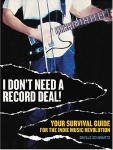The Red & Black Cafe - April 20, 2006
David Valdez Quartet with guest John Stowell
David Valdez, Alto and Tenor Sax
Dan Gaynor, Electric Piano
Dan Schulte, Bass
Mark DiFlorio, Drums
John Stowell, Guitar
The Red & Black Café beckoned on this warm April evening. Rain was in the forecast, but I knew the real storm would happen inside the café. Five talented musicians were getting together to prove once again that jazz in Portland can be a magical experience, and with the names: "Strayhorn and Konitz" describing the musical source for the night's entertainment, King Kong guarding the door would have had trouble keeping me out.
Mary-Sue Tobin, who is largely responsible for bringing in a series of great jazz musicians every Thursday night, has to be congratulated for bringing significant, seminal, contemporary jazz to the Red & Black stage. Check their schedule and website (http://www.paxselin.com/calendar.html) to see what I mean. Mary-Sue is herself a fine sax player, who can be heard Thursday, April 27th at Blue Monk on SE Belmont. Her choices are exemplary, as witnessed by this night's line-up.
Wasting no time getting into the theme, the group kicked off with a lively Lee Konitz tune, LT. Nice solos by Gaynor and Valdez (on alto) had me bouncing in my seat--great start. A Randy Weston tune written for his son, called Little Niles, came next, ratcheting up the tempo one more notch. This number again featured hot solos by Valdez and Gaynor, and a nifty drum solo by Mark DiFlorio. Mark's style is reminiscent of noted jazz drummer Steve Davis (drummer for Lynne Arriale), getting his whole body involved, arms akimbo, with less emphasis on wrists--very melodic--fun to watch and listen to. One gets the sense that DiFlorio is experiencing every nuance of the beat.
The latinesque Tommy Flanagan tune Eclypso, with it's interesting time signatures and pulsing rhythm showed off the fleet fingers of Mr. Gaynor, and we got to hear a muscular bass solo by Dan Schulte that typifies this consummate artist's strong style. Stablemates by one of my all-time favorite composers Benny Golson, featured Dave on tenor--smooth, effortless seeming--and segued nicely into the next number, the timeless jazz standard Goodbye, with a beautiful tenor solo by Mr. Valdez . . . this was the kind of solo you want never to end, as its strong notes wrap you up and hold on to you for dear life. I love Dave's playing, but he absolutely shines on ballads. The fact that he is so sparing with them makes each one all the more precious.
Two up-tempo numbers, Palo Alto and Ojos de Rojo, finished off the first set--the latter, a Cedar Walton composition with a Brazilian feel and a big "I-can't-stop-my-leg" sound. Everybody cooked, Valdez was back on alto. What a great set.
John Stowell, a national treasure on guitar, sat in on the final set. I love John's style. The first number was Book's Bossa and featured John with his distinctive style of playing--appearing that his fingers barely touch the strings--marvelous. Dave's alto solo smoked as fire stations around SE Portland went on alert. Next, it was Strayhorn time--The Feeling of Jazz, Blood Count, Lotus Blossom and Johnny Come Lately--I was in heaven. With Johnny Come Lately, it felt as if everyone kicked it up a notch and for me it was the culmination of a perfect evening.
The Red & Black Café can best be described by the term "Bohemian." Make that "Neo-bohemian" (laptops abound). Its stage resembles a living room from a bygone era with lamps, pictures on the wall, and plants all around. The colorful walls and open feeling, coupled with old couche s, smells of coffee and wood beamed ceilings give this place a very laid back touch. The crowd is usually loaded with musicians, including this evening, with Andre St. James and Robert Moore in attendance, to name but a few. There is a sliding cover charge, so it's up to the patrons to chip in what they feel the experience is worth. This evening, no one carried that kind of money . . . priceless. sk
s, smells of coffee and wood beamed ceilings give this place a very laid back touch. The crowd is usually loaded with musicians, including this evening, with Andre St. James and Robert Moore in attendance, to name but a few. There is a sliding cover charge, so it's up to the patrons to chip in what they feel the experience is worth. This evening, no one carried that kind of money . . . priceless. sk
Lotus Blossom- from Strayhorn set

 eal Deal- how to get signed to a record label. She has also created a series of music biz instructional tapes with titles like: How to do your own publicity (and tour support), On getting distribution, Marketing your music on the internet. She has put together some valuable resources on her web site that she calls Indie Ammo (resources to help you succeed). Read and subscribe to her free music biz email newsletter.
eal Deal- how to get signed to a record label. She has also created a series of music biz instructional tapes with titles like: How to do your own publicity (and tour support), On getting distribution, Marketing your music on the internet. She has put together some valuable resources on her web site that she calls Indie Ammo (resources to help you succeed). Read and subscribe to her free music biz email newsletter.





















